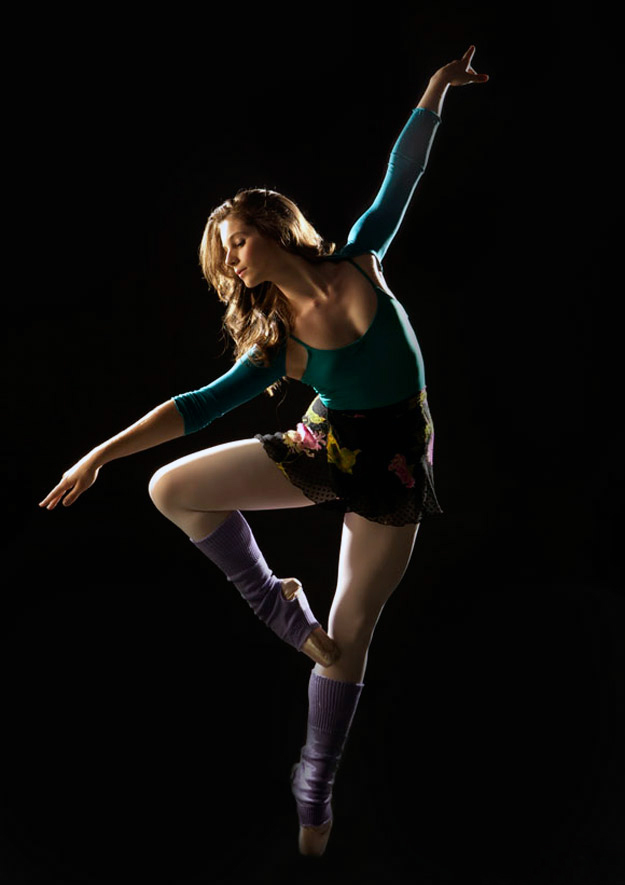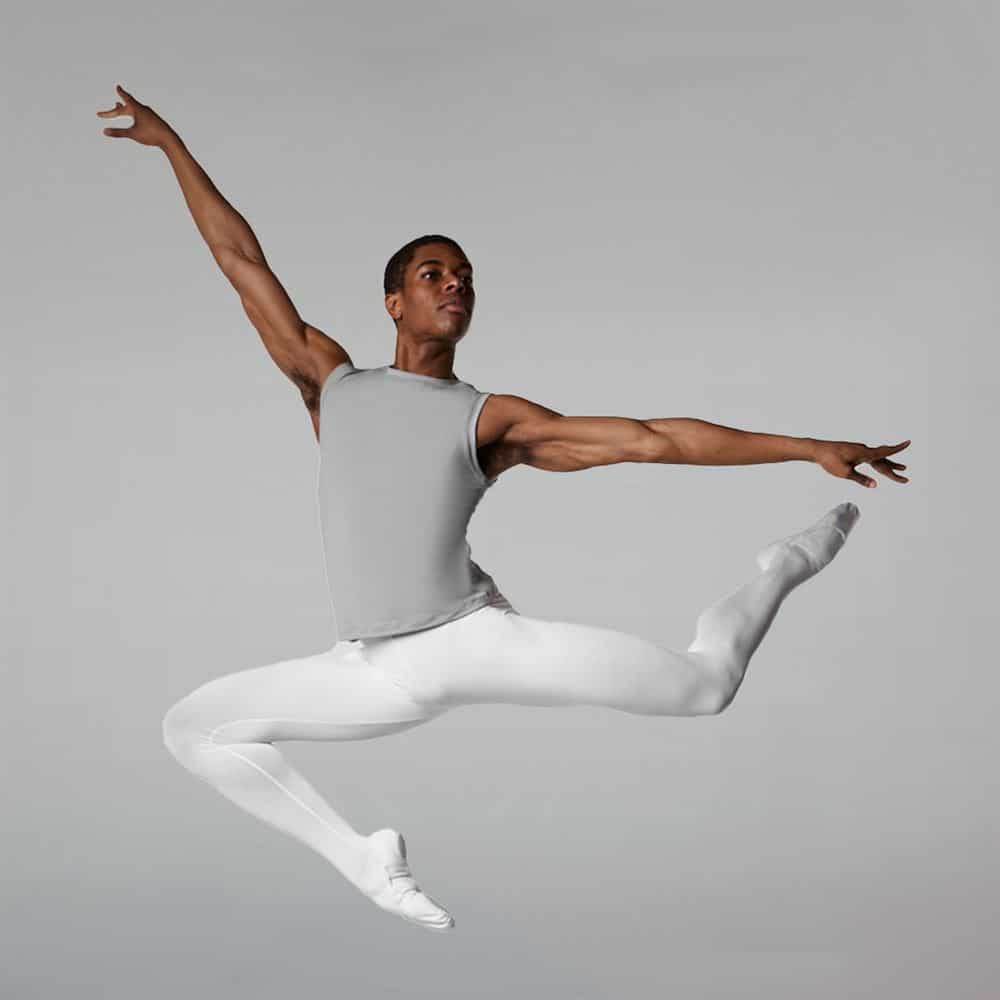Chapter 2 | IN MOTION
In this chapter I’m going to show you three different ways to learn how to draw the human figure in motion: cut-out figures, stick figures and spot figures. Take a look at them and choose whatever you like to try out.

1. Cut-out figures
In the following image the model figure has been cut into separate parts, wherever the body parts can move.
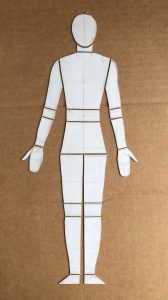
Exercise 1: Draw such a standing model figure of at least 20 cm long on sturdy paper. Cut out the movable body parts separately. Place the cut-outs on a new sheet of paper in an active position. Carefully trace the figure with (coloured) pencil. Slide the cut-outs aside and finish the drawn figure in a way that you like. You can stick the saved cut-outs in a new position on coloured paper (see example of a pupil).
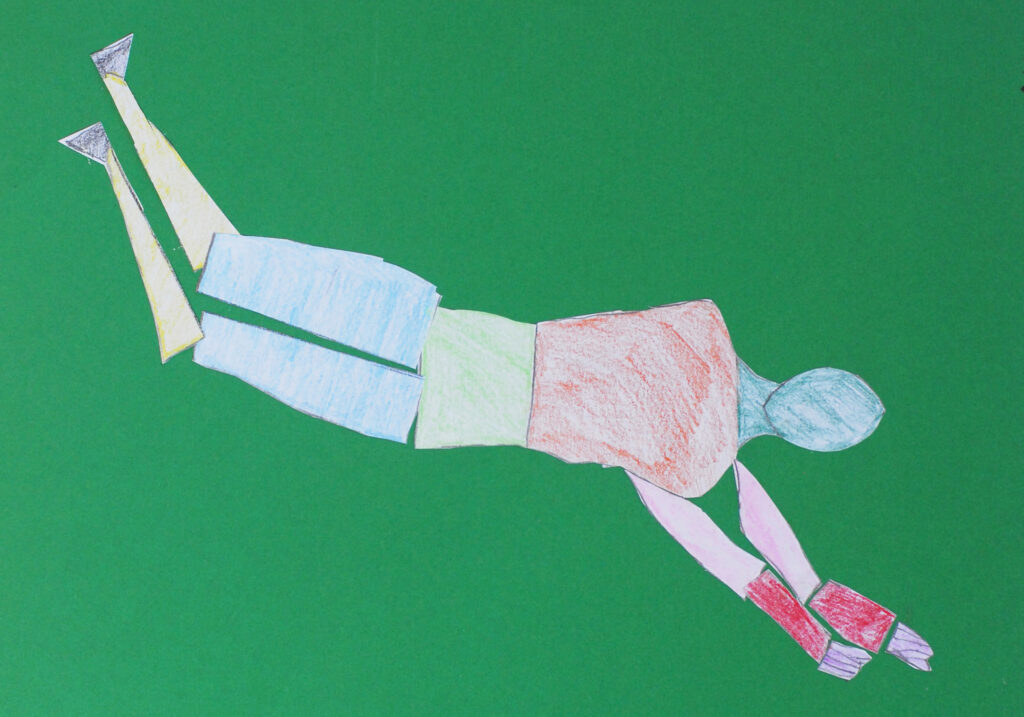
2. Stick figures
A nice way to come up with all sorts of movements is by drawing stick figures. Important in stick figures are the hinge points (for example at the elbow and knee) and especially the lines of the shoulders and the pelvis. In a standing basic position, those two lines are horizontal (image).
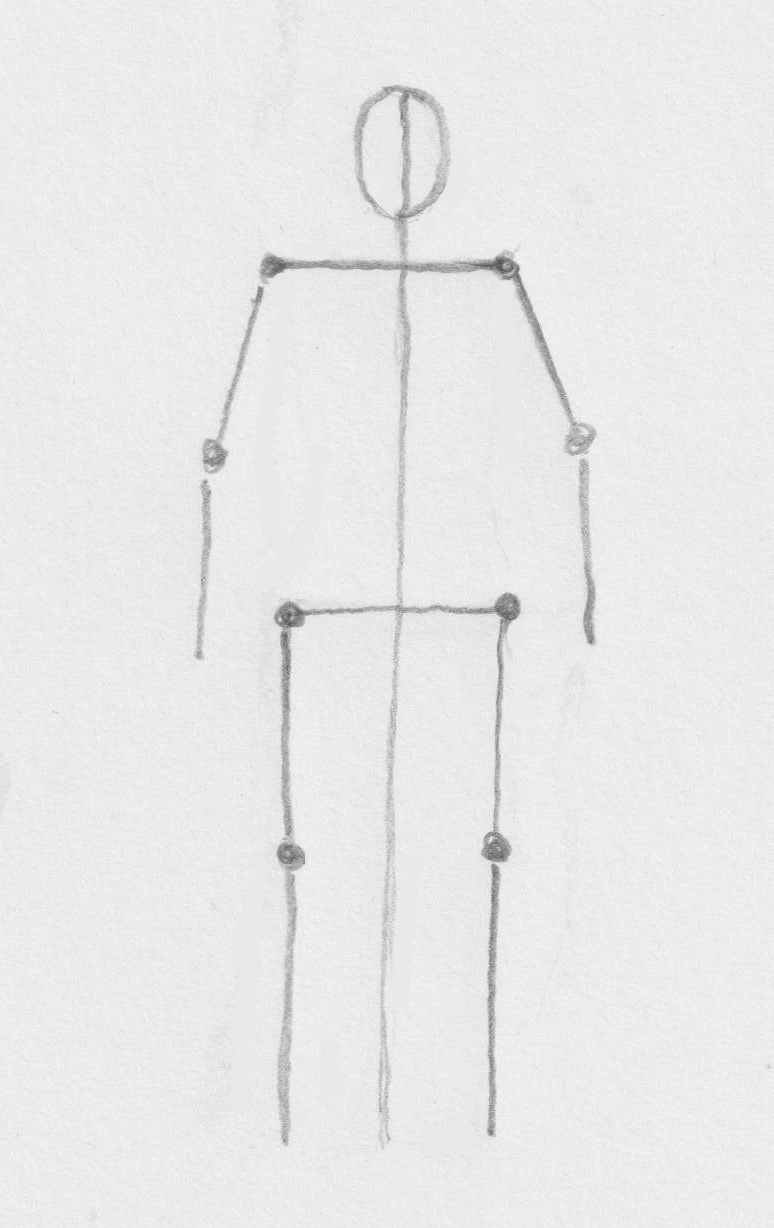
It may be nice to color the limbs and hinge points (left). In the stick figure in motion (right) I only made the lines of the shoulders and pelvis red. In motion, those lines can tilt, often in opposite directions.
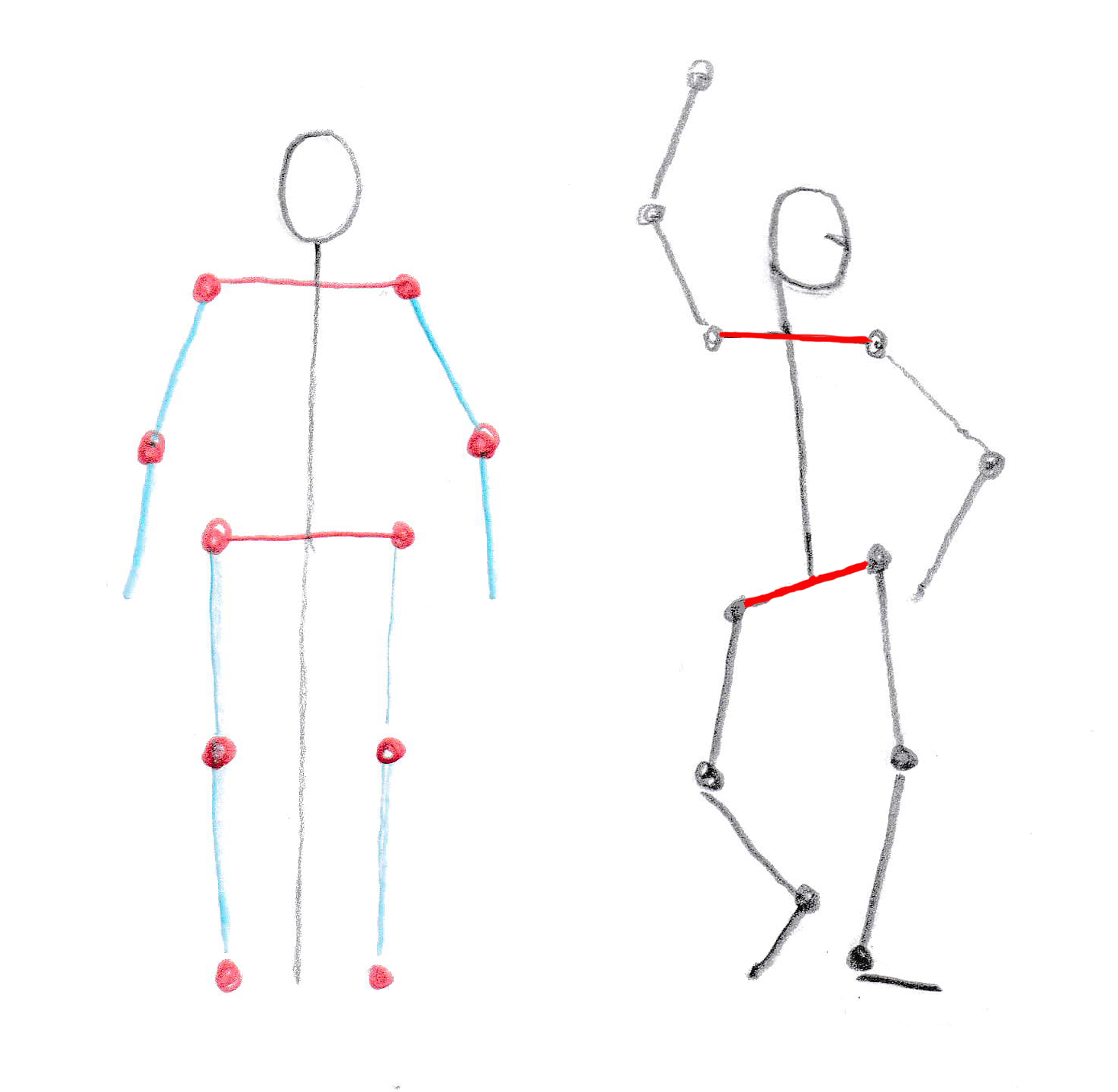
Exercise 2: Come up with one or more active poses with drawn stick figures. Make them do all sorts of things, like playing soccer. With a little erasing you can easily change poses. Sometimes you draw sticks for the hands and feet, sometimes you don’t. If one leg passes in front of the other (left figure below) you draw that leg a bit clearer.
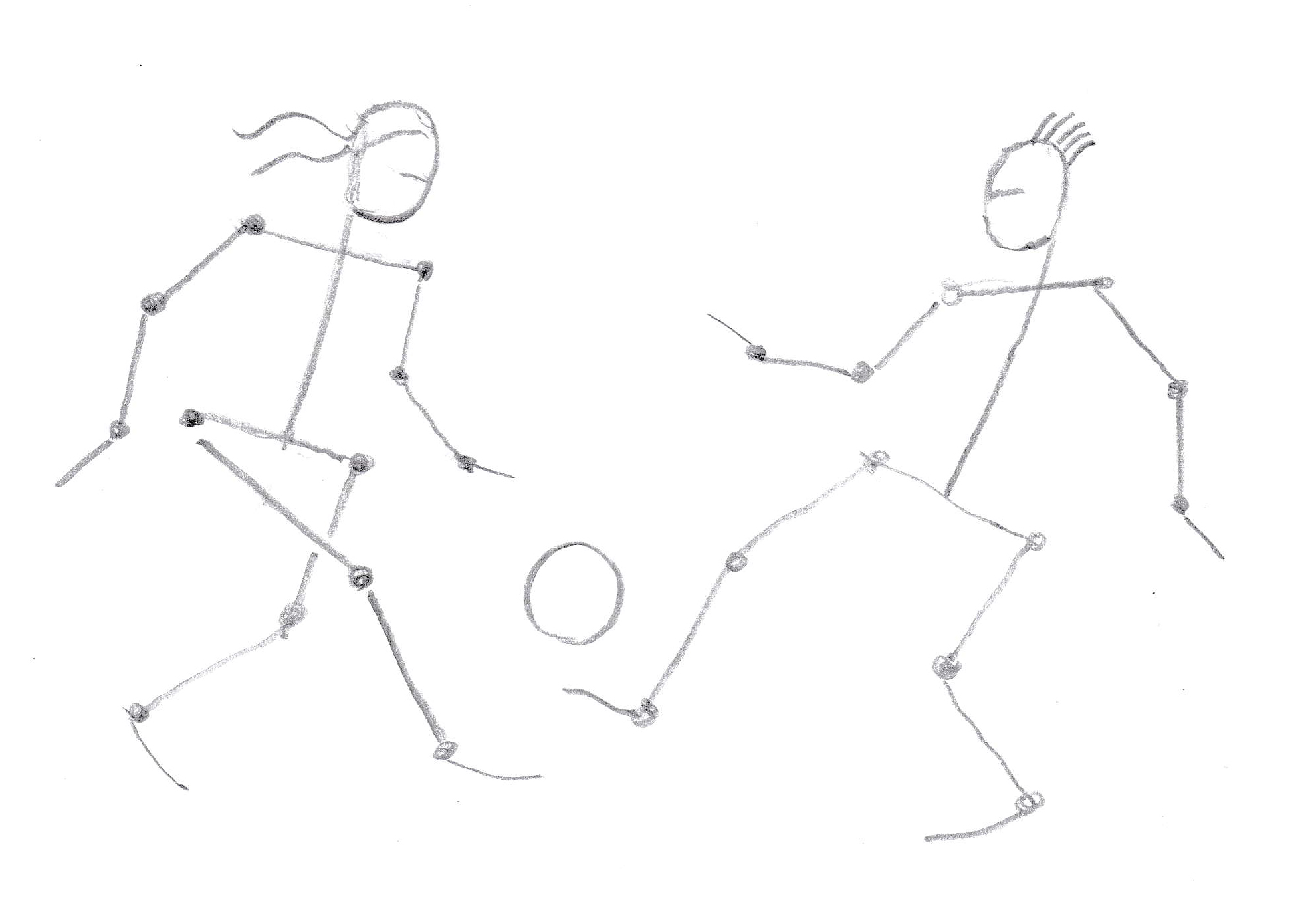
The spine can of course also be curved. With a line you can easily indicate the direction of the head’s gaze.
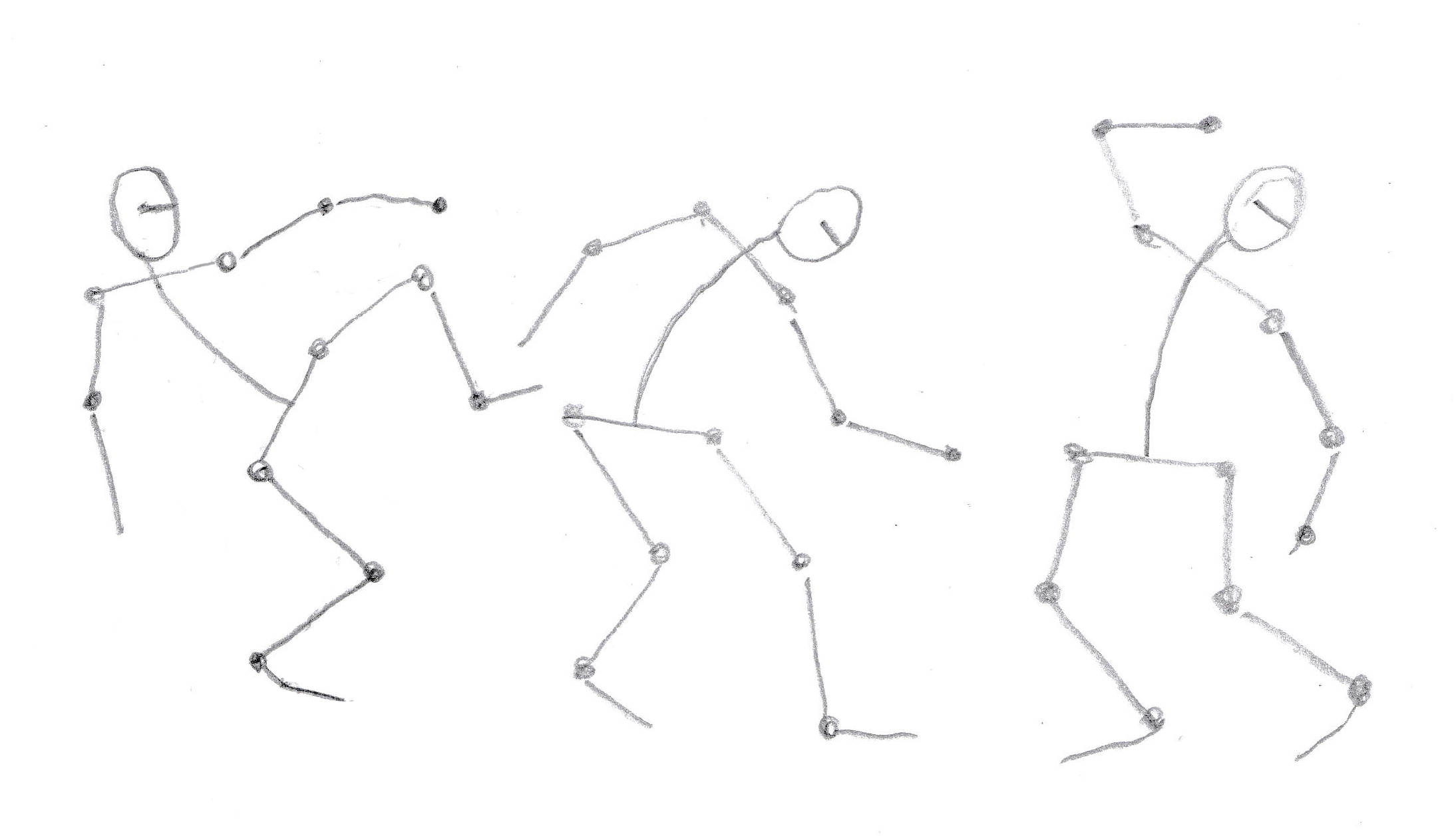
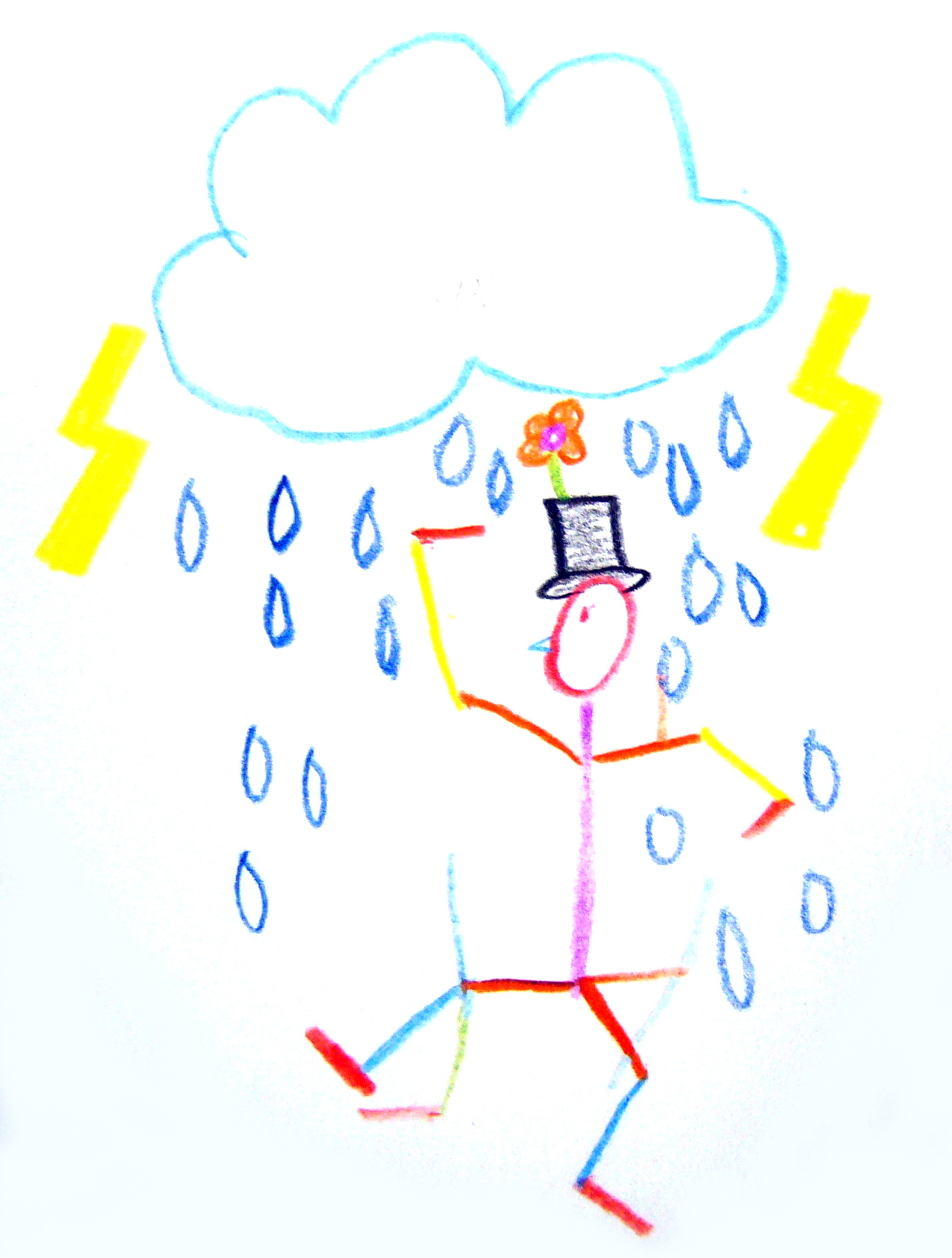
Once you have drawn a stick figure it is farely easy to give them something of a body. In my example the distinction between the chest and the belly/hip section from chapter 1 has been drawn again. For the (simplified here) feet, see the lesson Feet, chapter 2, level 2. For the hands, see the lesson Hands, level 1.
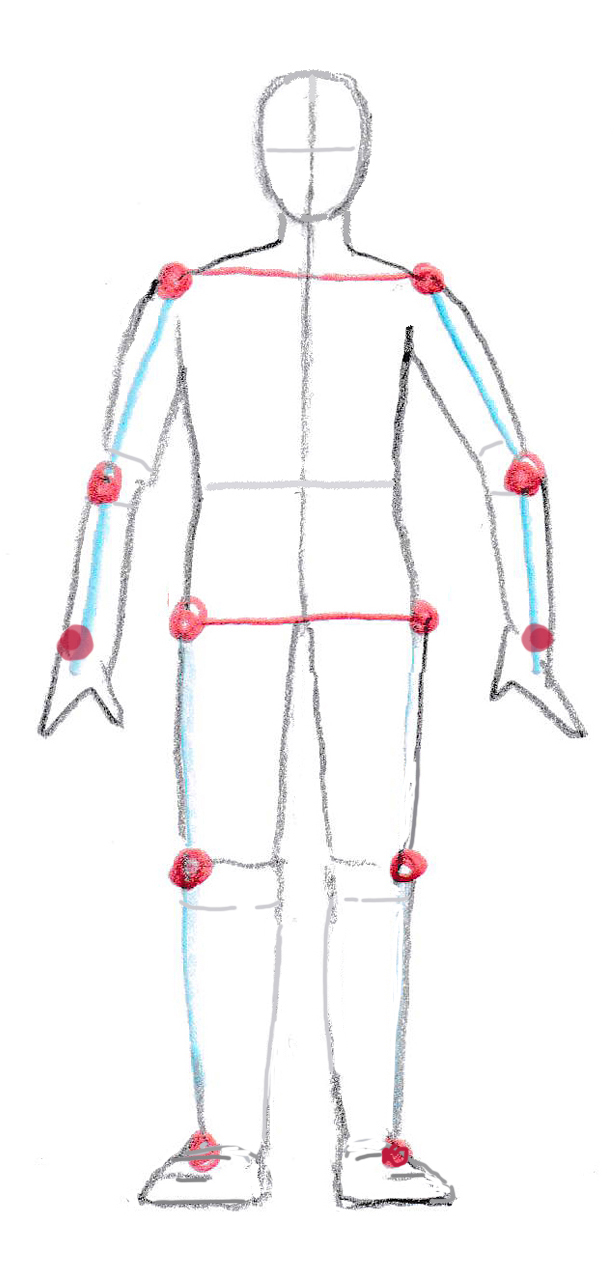
Exercise 3: Draw one or more stick figures and then give them volume as in the students’ examples (both not completely finished, no problem).
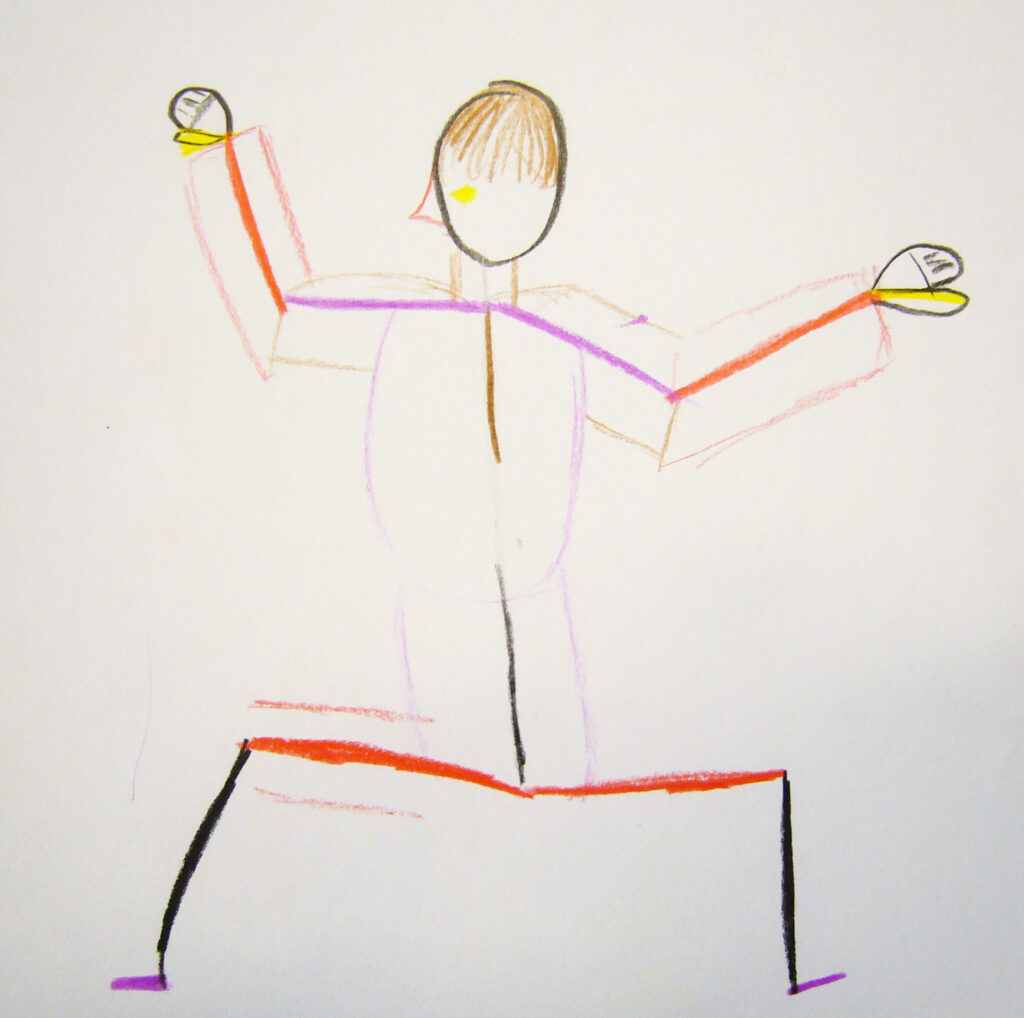
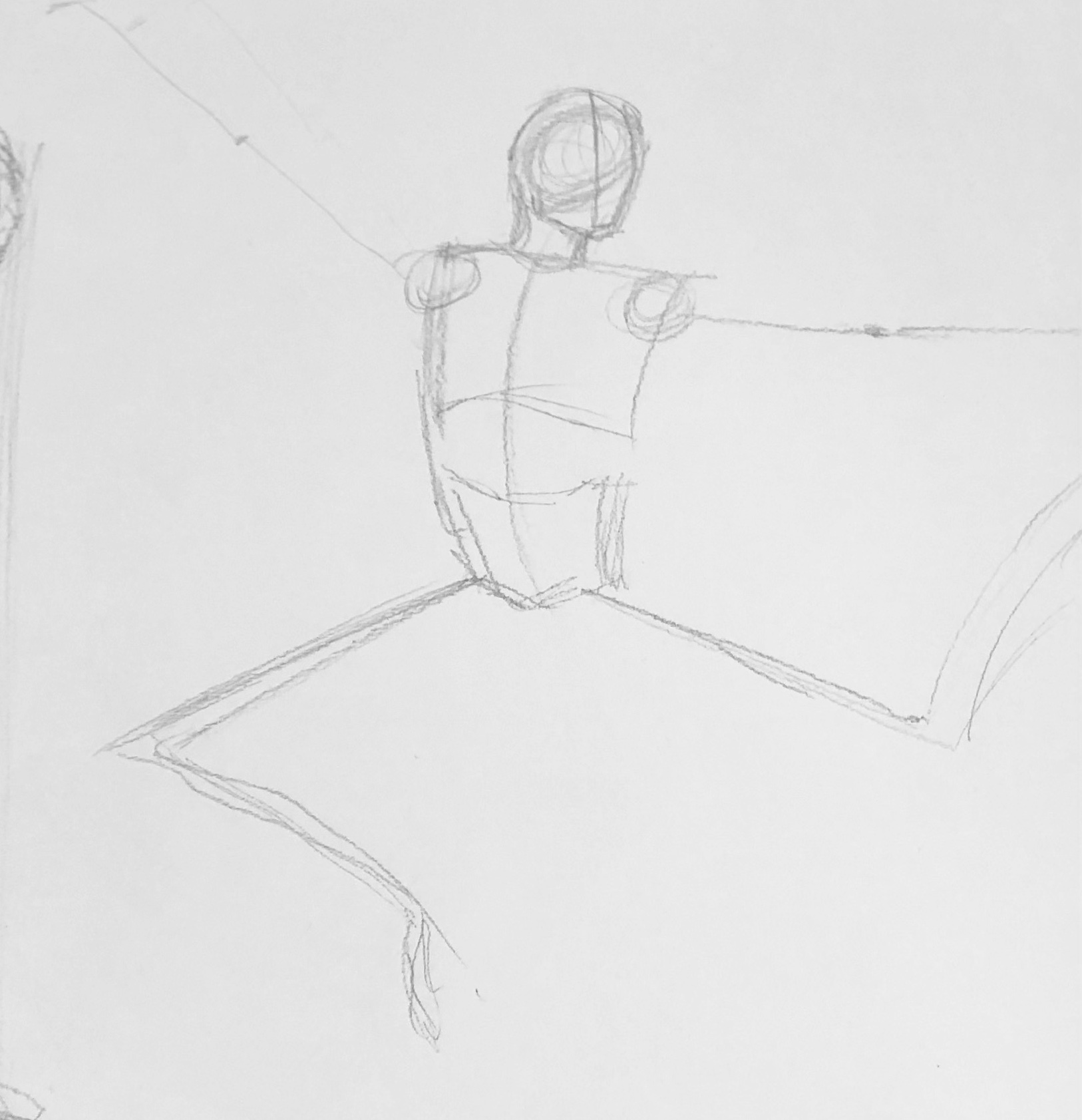
3. Spot figures
Exercise 4: A third way is to draw ‘spot figures’ with soft (coloured) pencils. You draw spot figures without lines! Always keep an eye on the structure of the body. This exercise also lends itself well to brush with ink or watercolour.
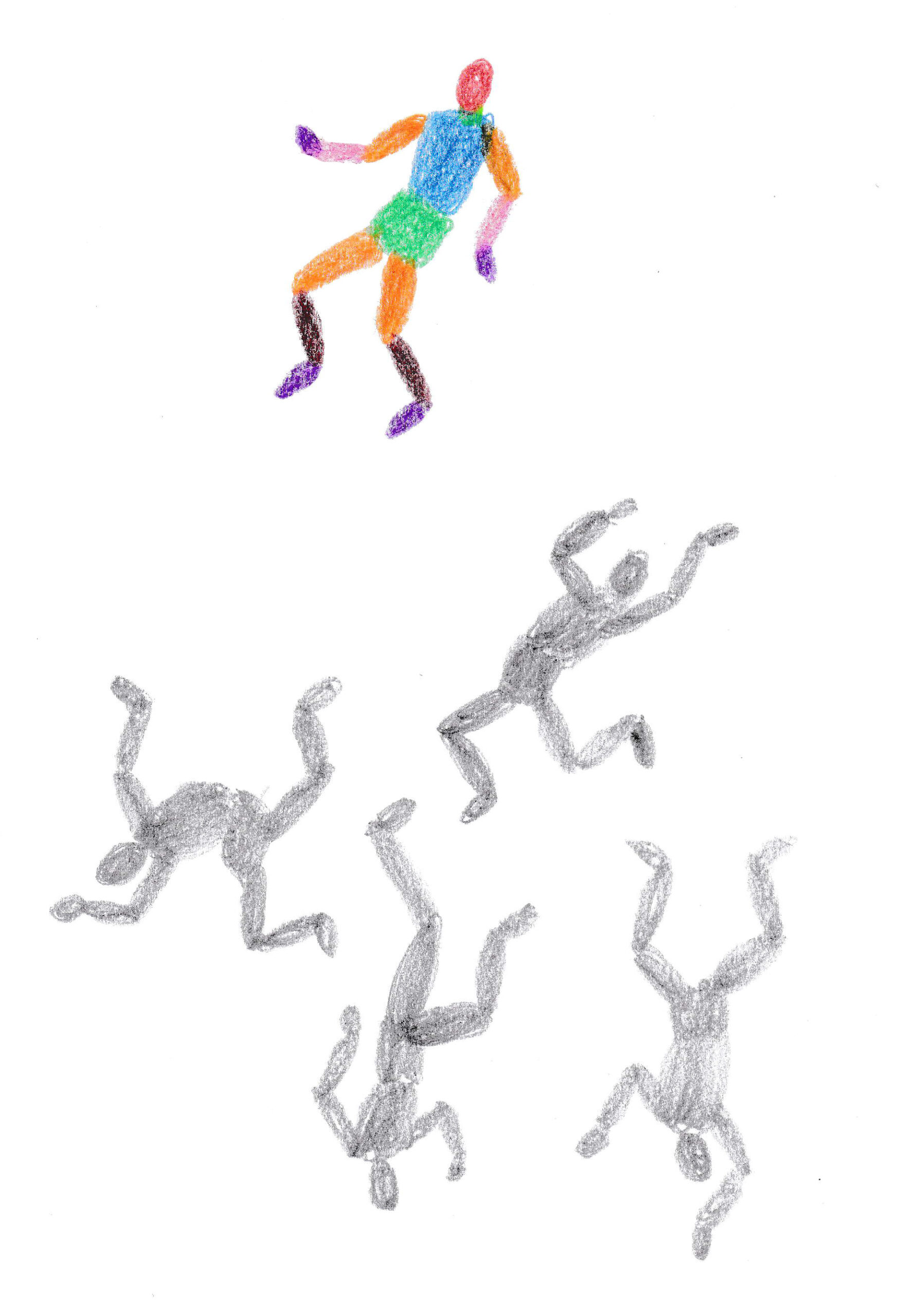
EXTRA: You’ve now seen/learned different ways to draw moving human figures. Try using one of these methods to draw the dancers in the photos.
